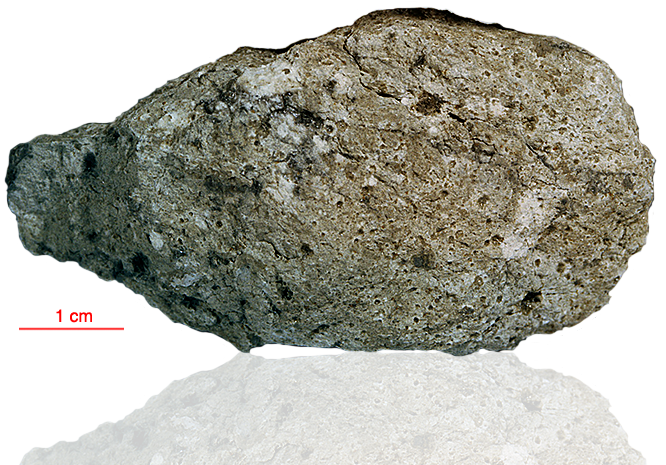
Fact sheet
60625 is a white rock collected as a rake sample from near the Lunar Module. The composition shows it is plagioclase-rich, but it also has high content of rare earth elements (i.e. it is an unusual breccia or impact melt rock). Texturally it contains irregular oikocrysts (pyroxene) up to 1 mm, enclosing euhedral plagioclase chadocrysts. Some plagioclase is shocked. The mineralogy is 65% plagioclase (An95), 17% olivine (Fo77) and 16% pyroxene (Wo7En75Fs18) with minor ilmenite, armalcolite and a K-rich phase. In reflected light, metallic iron can be seen to forms rounded crystals mantled by troilite.
The sample weighed 117 grams before analysis and has not been dated.
Further details of this and other Apollo samples are here: http://curator.jsc.nasa.gov/lunar/
Our thin section image shows a sequence of numbers (1-3) that have been scribed on the glass behind the three rock fragments. In places the thin section is thick so between crossed polars some plagioclase crystals are yellow instead of shades of grey.
The Apollo 16 landing site was in the hilly region around Descartes crater in the lunar highlands. The landing spot was chosen to allow the astronauts to gather geologically older lunar material (Descartes Formation and the Cayley Formation) than the samples obtained in the first four landings, which were in or near lunar maria.
The mission lasted 11.1 days, with a stay on the lunar surface of 71 hours. The crew were on the lunar surface for 20.2 hours during which they traversed approximately 27 kilometers and collected approximately 96 kilograms of samples.
Apollo 16 was launched on 16 April 1972.






